After removing the bottom plate, a second shield presented itself.
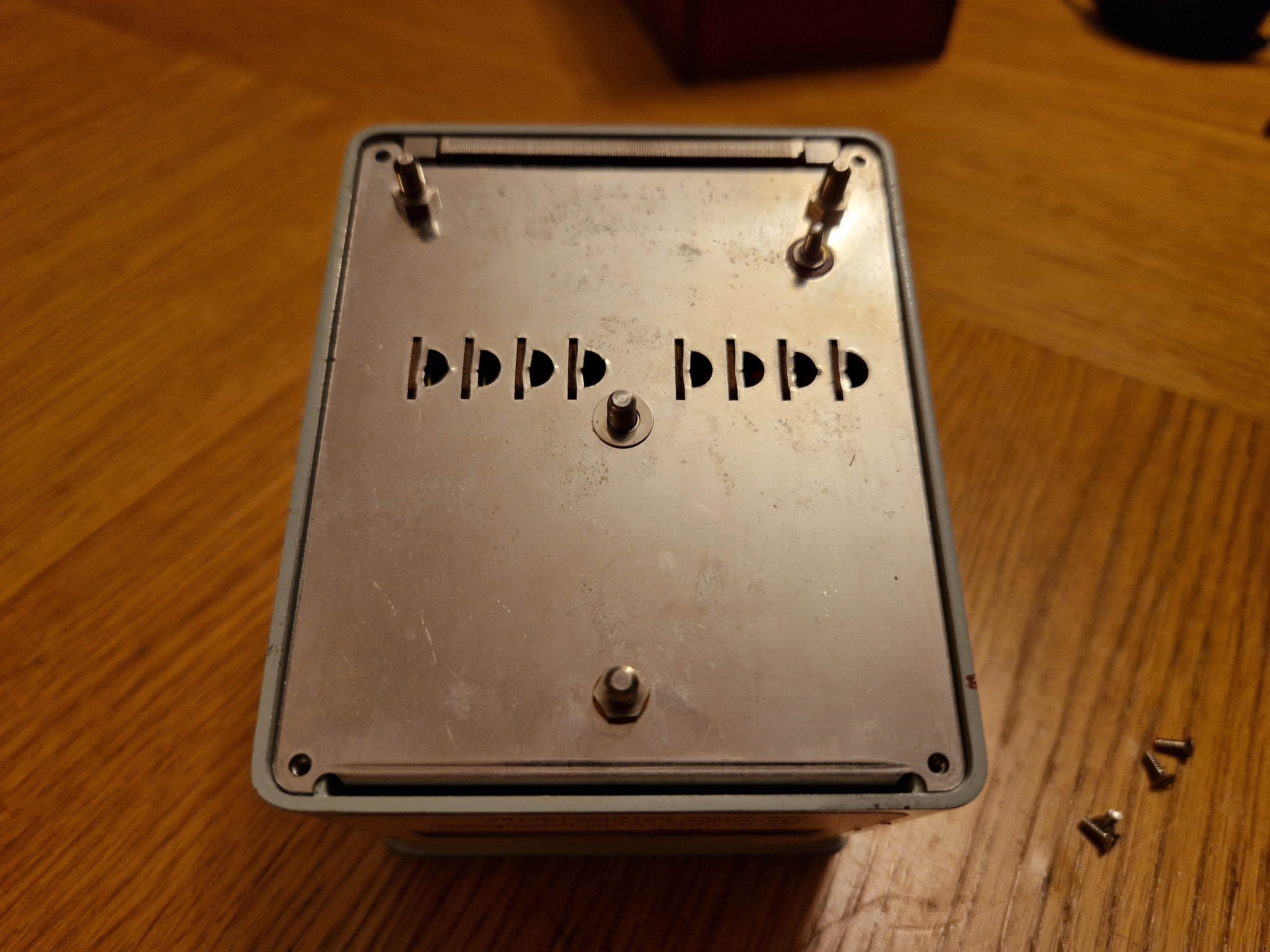
After unscrewing the three locating pins (one of which had a pure copper washer underneath it), the contents of the magical box fell out into my hands.
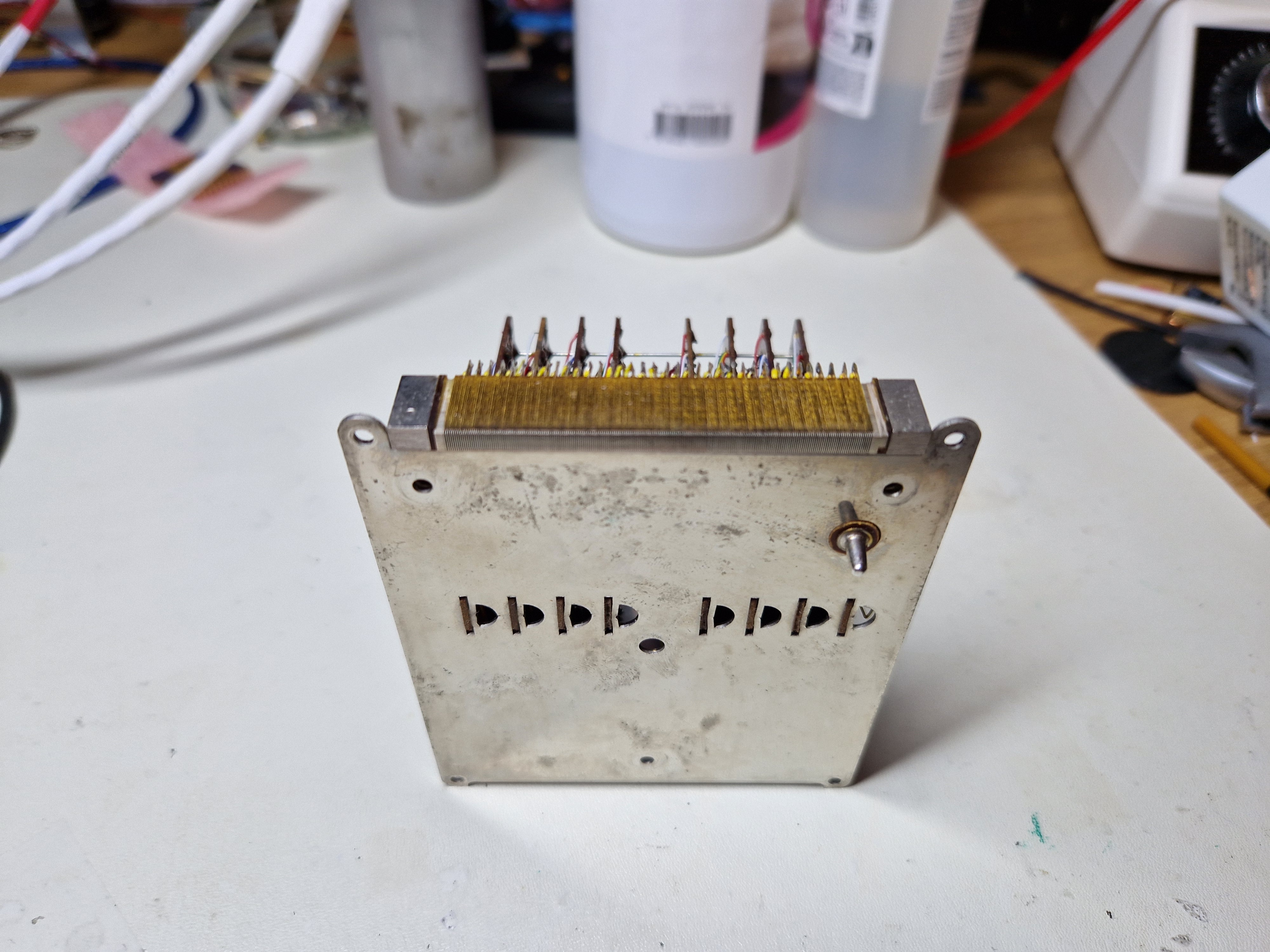
The "linear potentiometer track" is actually a large number of thin metal plates with an insulator between each plate.
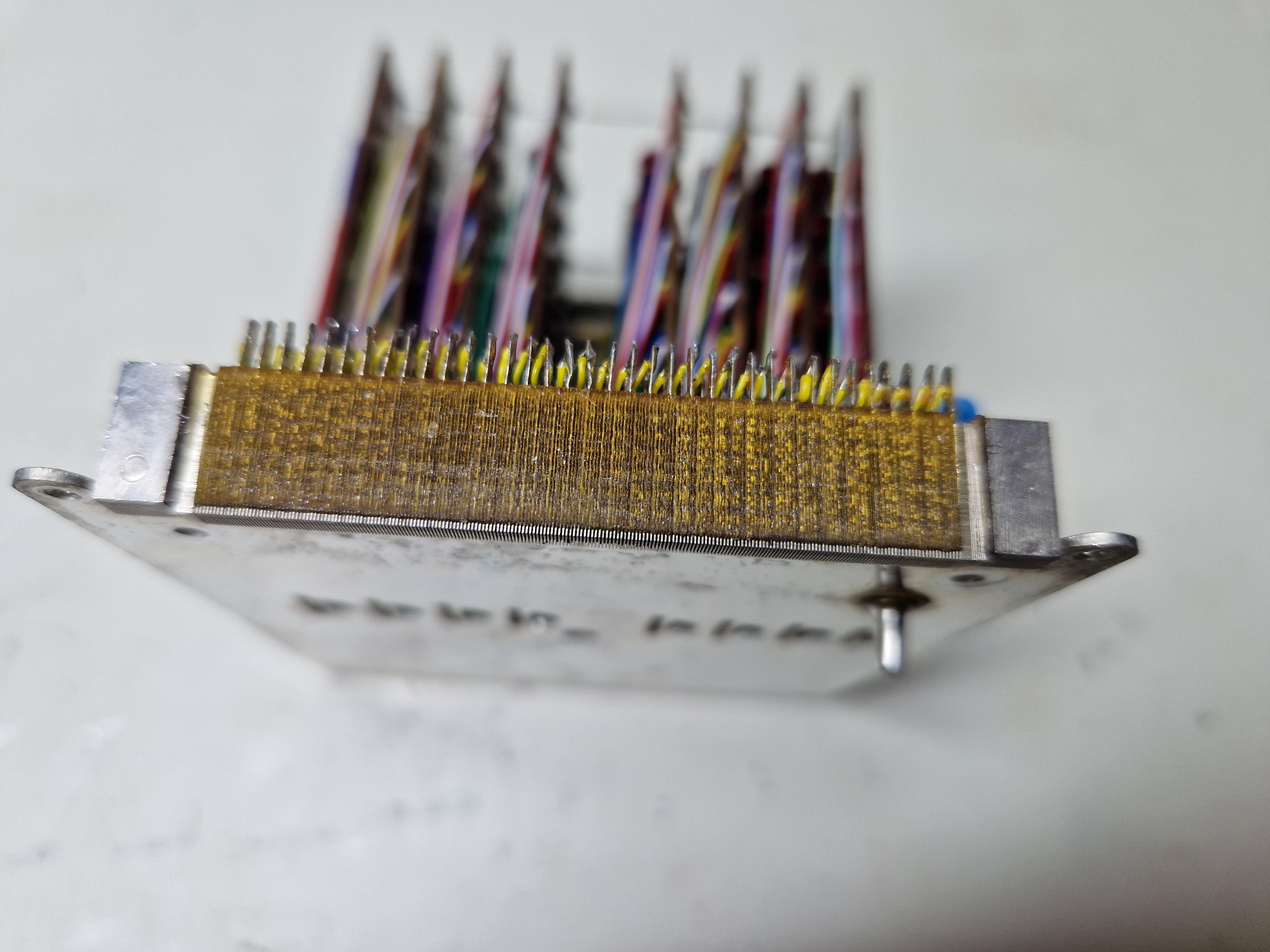
Each plate is made so that there are six different versions, each one with a solder tag which sticks out the back of the stack at six different heights. The result is this:
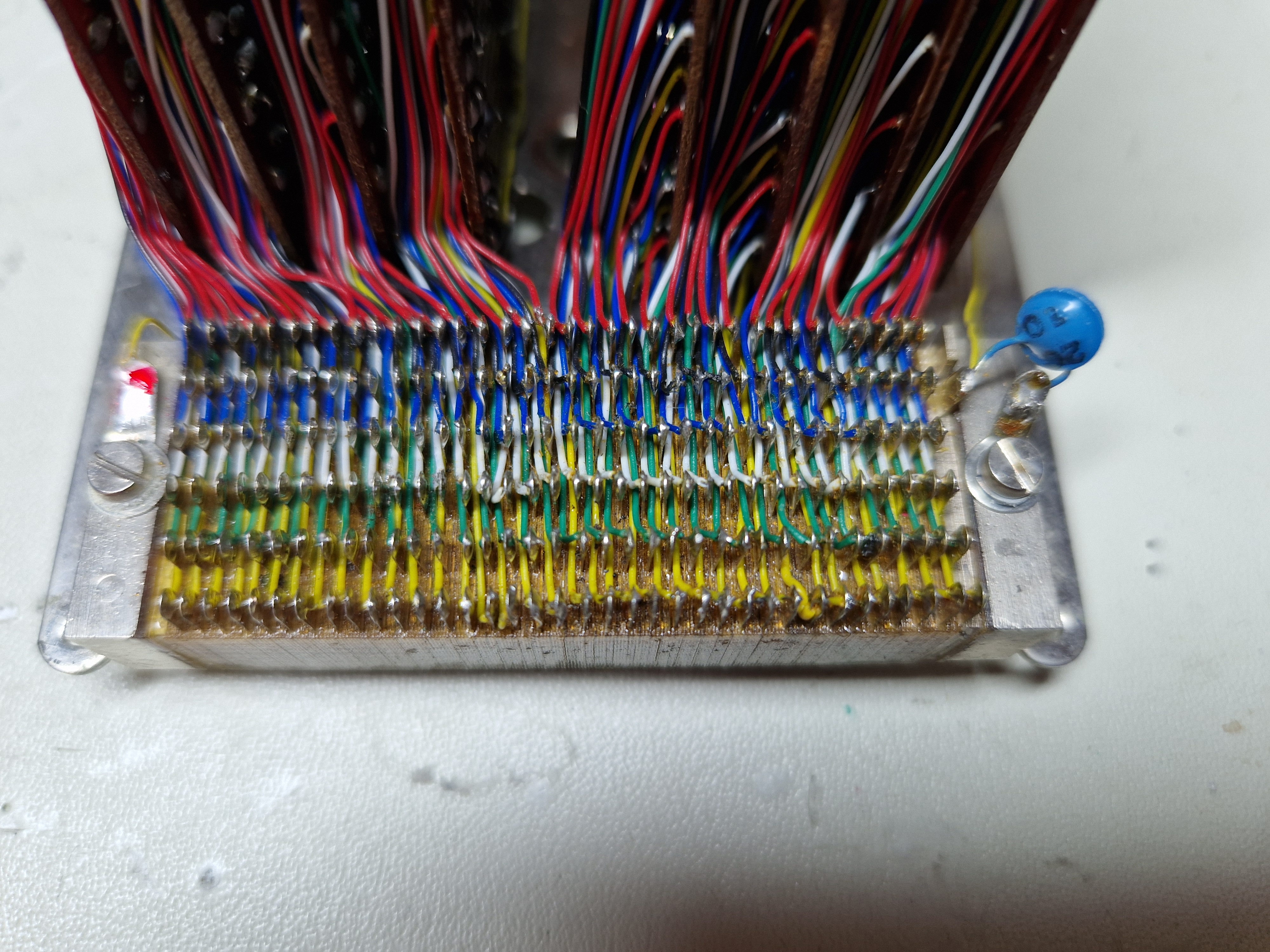
The resulting matrix of 216 connection points (36 by 6) is then routed to eight PCBs, each one containing 27 resistors and the occasional capacitor or extra resistor. It's all hand wired and contains what appears to be a mixture of custom and standard value resistors. One for each wire presented as a linear potentiometer track on the outside of the unit. Undoubtedly selected by grey bearded Danish engineers fuelled by Gammal Dansk and smørrebrød who are now long dead and gone.
More pictures (all clickable for full size):
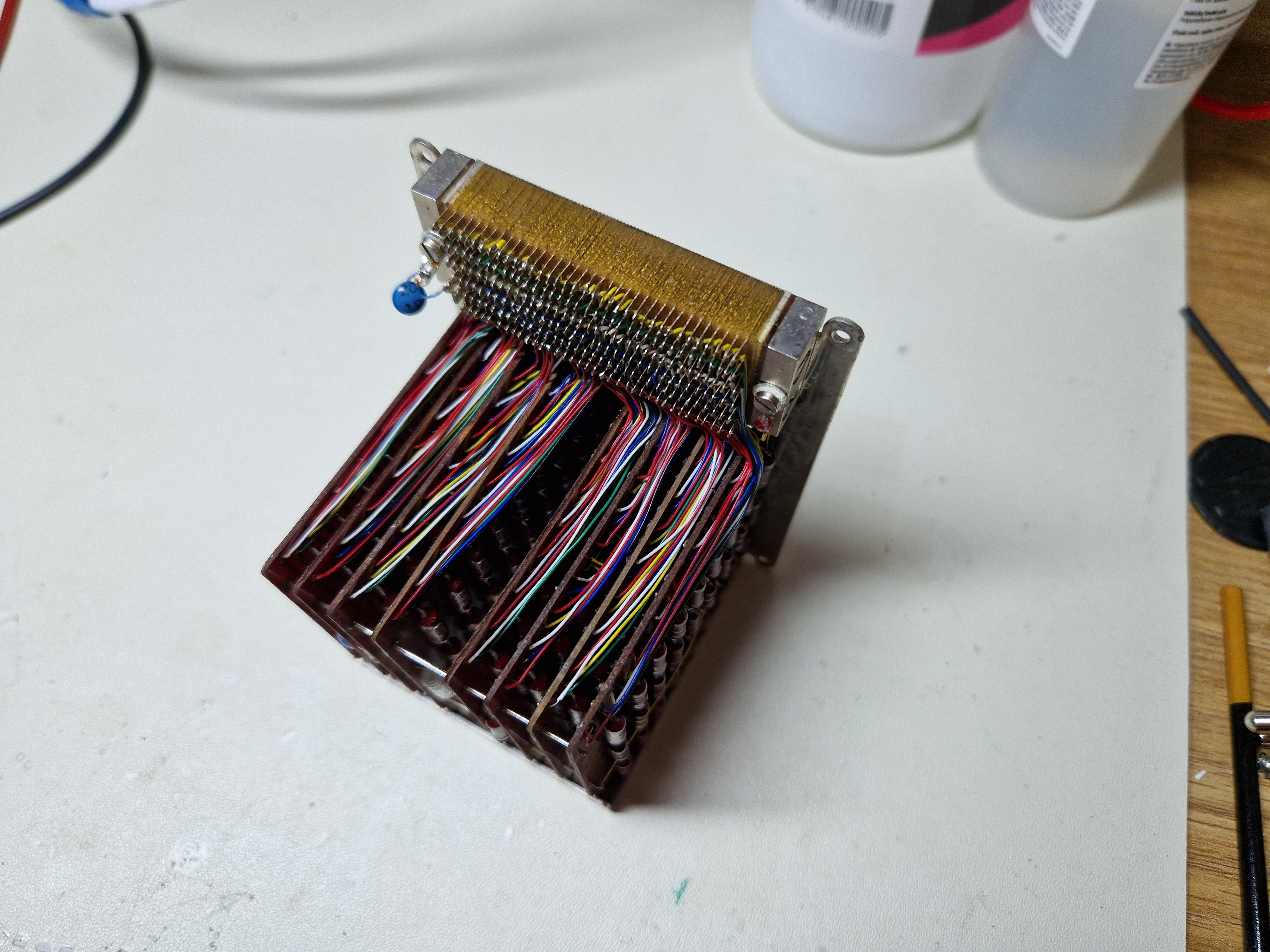
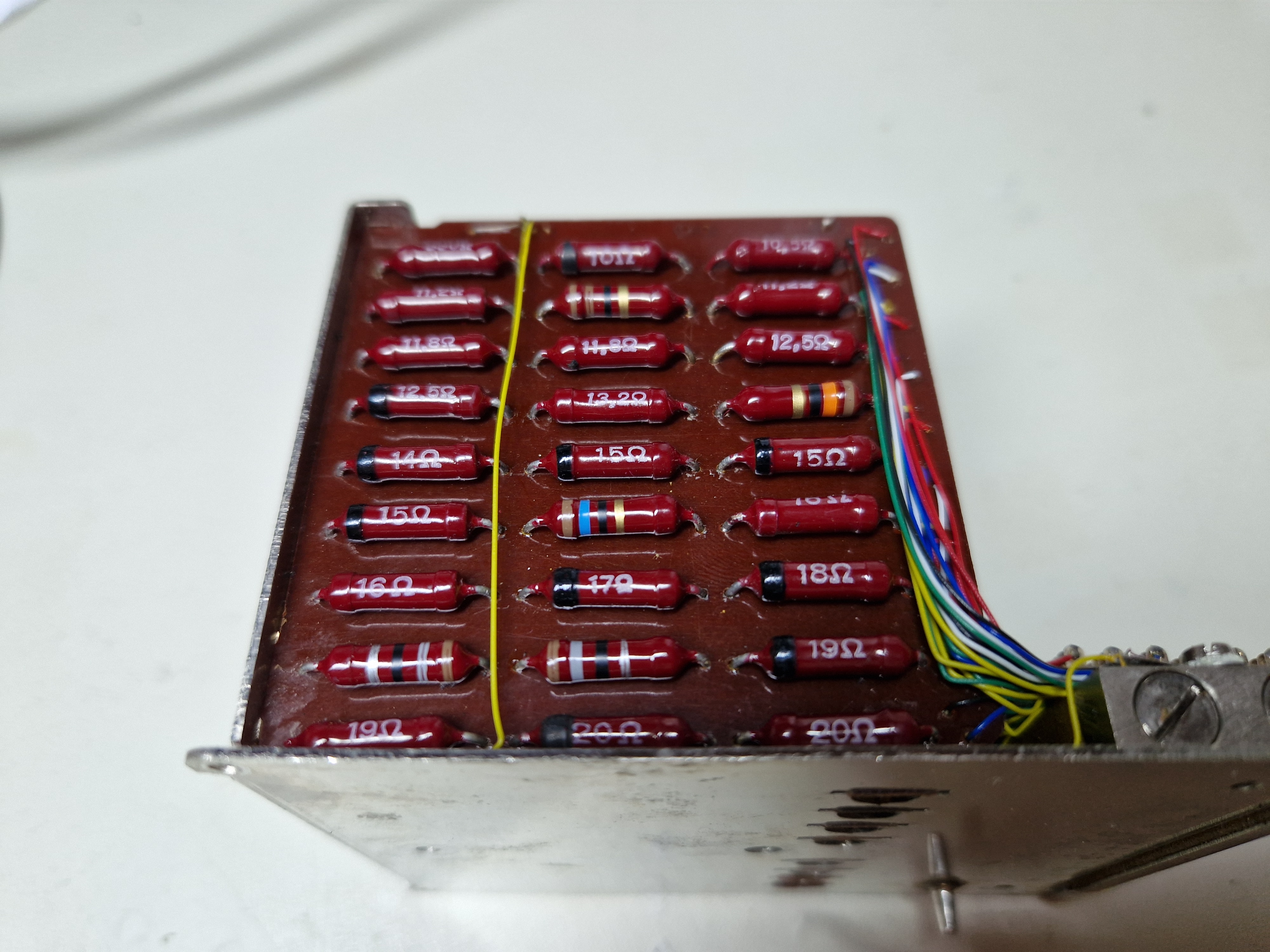
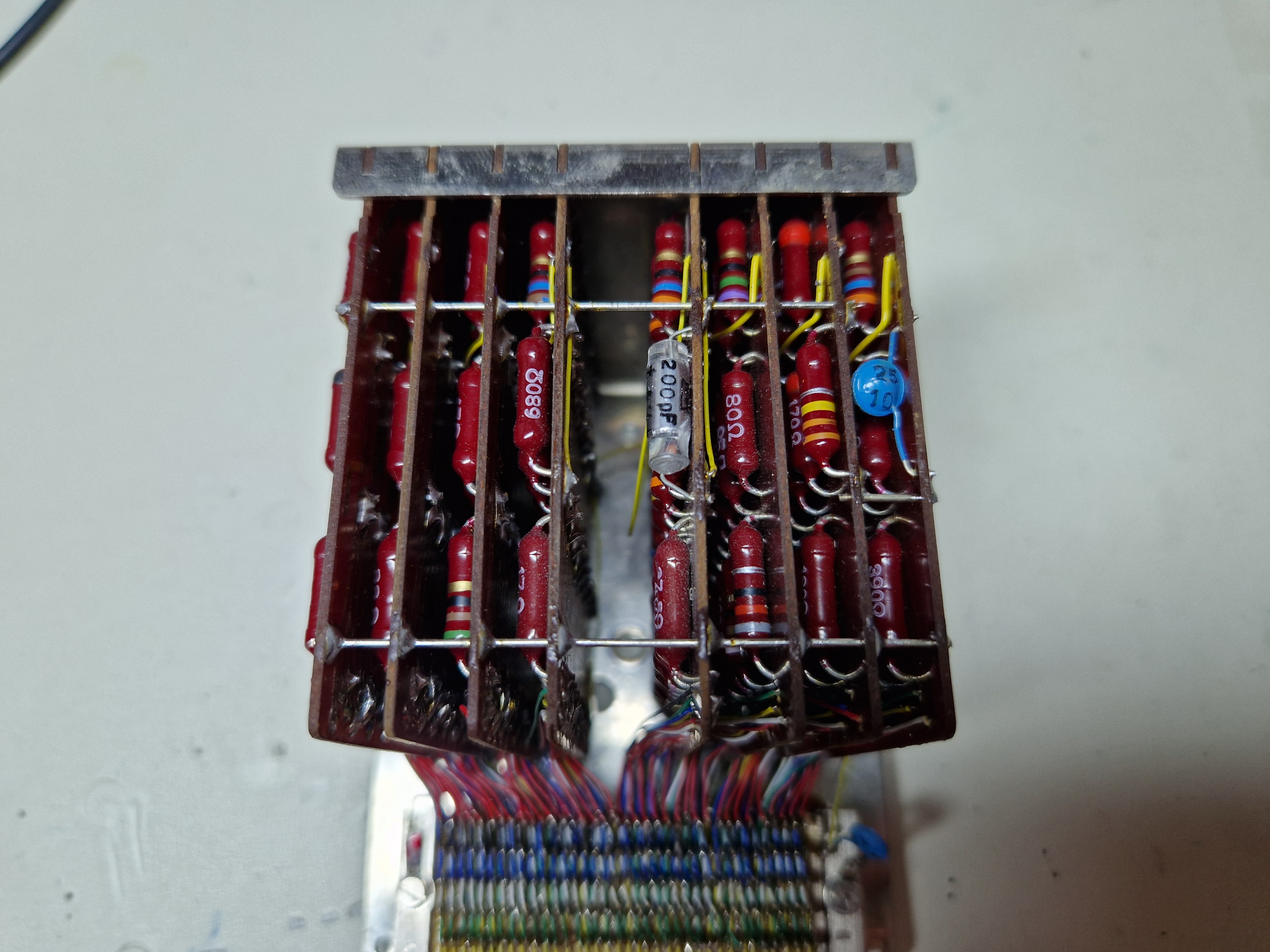
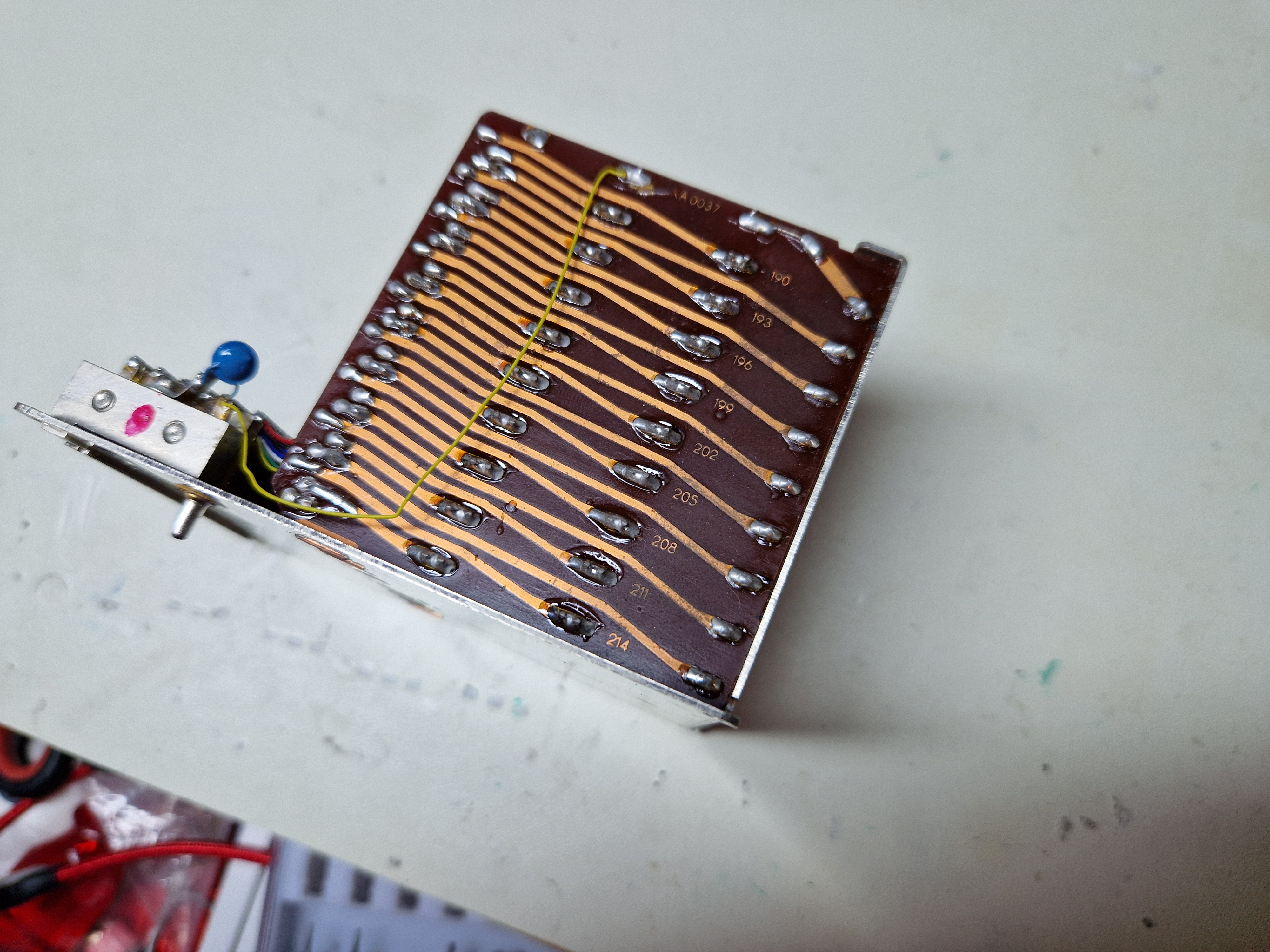
Truly an insane way to build a potentiometer! Of course, it's probably the
only way to build a logarithmic potentiometer, unless someone has invented resistance wire with a logarithmic resistance per millimetre.

When I find some way to reliably traverse the track with something repeatable, I'll give it a measure.